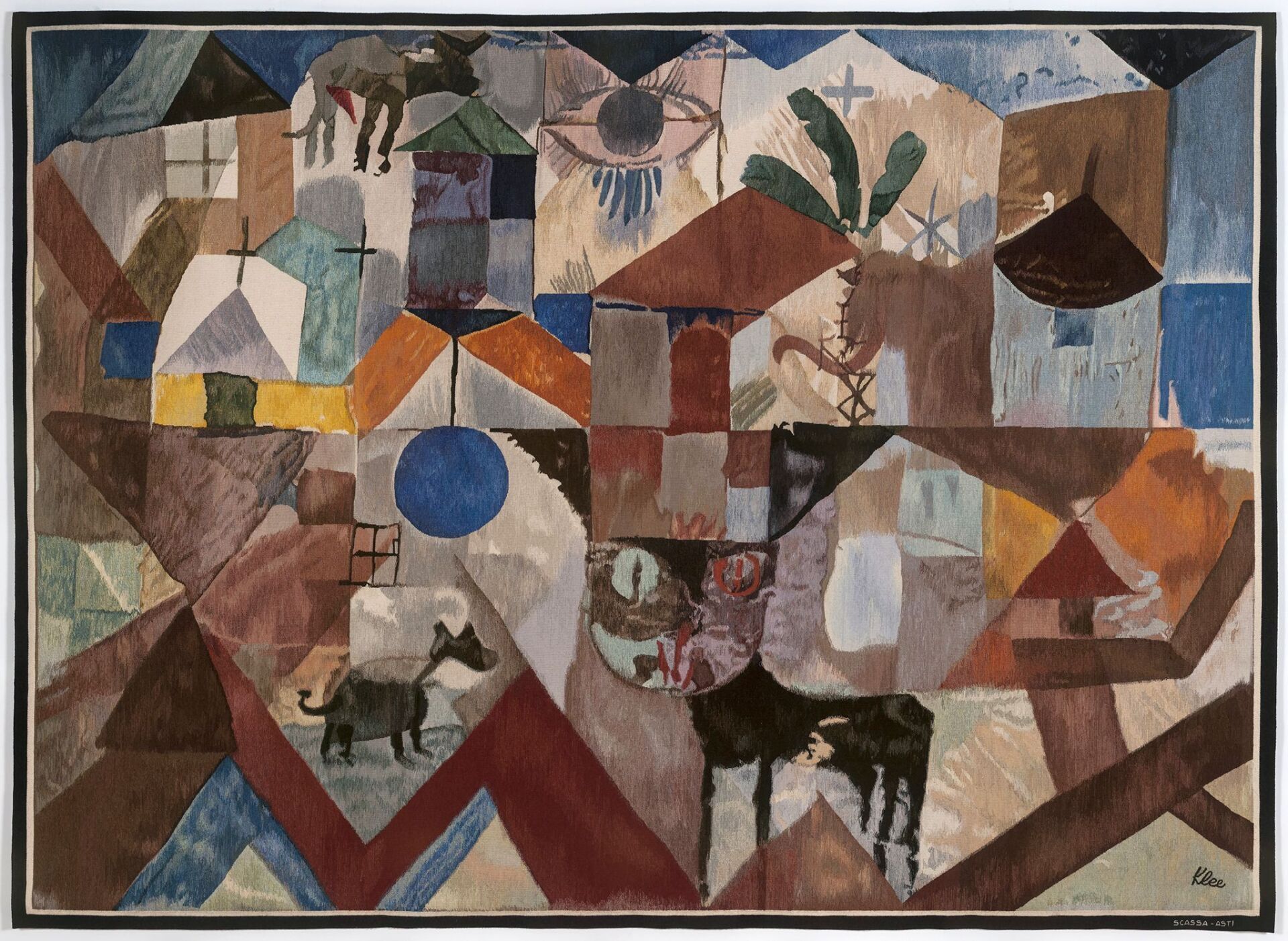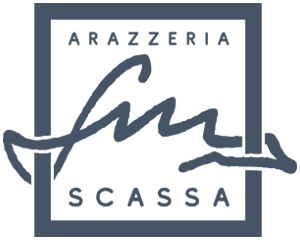Weaving Paul Klee
Over time, the Arazzeria Scassa has paved its own artistic path, uniting various pictorial routes, reinforced by Ugo Scassa’s instinct for an extensive period of time. Amongst the artists most loved by the Asti tapestry maker, selecting from the various national and international names, we find that of an artist born in Switzerland, ever attentive to the importance of colour and who managed to develop a personal style influenced by Expressionism, Cubism and Surrealism: Paul Klee.

Ugo Scassa had always been particularly drawn to Klee’s ability to work with colours, a sort of painstaking weaving, exactly like those carried out by the weavers under his direction. Indeed, he considered Klee’s works particularly suitable for becoming a tapestry, realising nineteen works in just eleven years. He found Klee’s art to be particularly pleasing. Each new work by the artist transposed and initiated on the Asti looms represented a real challenge in terms of the research, interpretation and technical expertise.
Paul Klee’s artistic path leads us back in time, to the period between the two World Wars, when in 1919 the Bauhaus – literally the House of Construction – began its activities at the behest of German architect Walter Gropius, founder of an art school in the city of Weimar. The Bauhaus principles were initially the mutual collaboration between teacher and pupil, a subject of stringent democracy that led to the abolition of the school in 1933 under the command of the Nazi regime.
As a reaction to the prevailing cultural and artistic world at the time, the basic idea was the close relationship between craftsmanship and art, in the desire to combine this with the nascent technology. Proceeding from these premises, the Bauhaus saw the construction of a non-elitist artistic culture being trialled, leading to the birth of design as we know it today. To teach at this famous school, Gropius called upon the artists whose experiments were more advanced, for example Vassily Kandinsky and, in the period 1920–1921, Paul Klee. This bet immediately paid off, giving the artist the opportunity to get in touch with the numerous creative minds partaking in this fundamental experience.
Klee’s art borders that diaphragm that divides and separates the world of dreams from reality. Ugo Scassa liked this aspect very much – a stroke, a somewhat childish drawing that evokes fairy-like and enchanting locations, at an unspecified moment in time, in which no element helps us to understand if it is day or night, free from temporal associations, a sort of archetype, a primordial nature.
According to Ugo Scassa, this was all an added bonus, a value, a nuance in the nuance. Due to his truly innovative way of understanding art, Klee is considered as one of the founding fathers of the idea of colour in contemporary art. Indeed, a famous study on the theory of colours in the name of the Swiss artist is to be recalled. The analysis was based on a prospectus divided into six parts, in which the complementary aspects are placed in a rapport with the primaries, according to an idea that recalls the principle of movement, the interaction between the various colours based on dynamic transitions. Movement and transition are perceived by the sight and by the soul.
For Klee, who considered art and theory inseparably linked, movement flowed into compositions through gradations of colour whilst being intrinsically linked to colour combinations.
This idea of movement and the action of colour undoubtedly captured Ugo Scassa’s feelings of art entirely, prompting him to dedicate a group of works in high-warp woven wool to the Swiss artist. In his productions, blue is rampant, present in many shades, almost a totemic colour halfway between emptiness, the daytime sky and the indefinite space of night-time.
The Bauhaus and the weaving lessons
Klee began teaching at the Bauhaus on 13th May 1921, initially with a course on practical composition lasting a fortnight, before kicking off his first regular semester in November of that year. During the winter of 1925–1926 and through to 1930, Klee held a design course, alternating lessons and exercises then adding a textile design course more or less in the same period. Amongst the students were two notable names in the history of weaving and tapestry, Anni Albers and Gunta Stölzl.
Klee’s weaving lessons were particularly dedicated to the study and planimetric design of surfaces, teaching his colour theory and avoiding the dogmatic aspects of teaching as much as possible, allowing students to develop specific skills. Proportions, reflected images, shapes and primary colours were all part of his educational programme.
Thus, Klee was not only one of Ugo Scassa’s favourite artists but also represents the ideal point of contact between an art house such as the Arazzeria Scassa – a place of training and dissemination of art – and the Bauhaus, in some respects one of the most innovative movements in design of the last century.
Bear in mind that the Bauhaus weaving workshop was likely the most progressive and successful at the time. Its weavers, teachers and students invented the concept of contemporary textile design, in a world in which weaving and art were continuously intertwined, driven by the rapport between drawing and weaving, as still happens today in the Certosa di Asti atelier.
Indeed, in the Certosa we find the same operating principles, the exploration of the wonderful qualities of the different textures and fibres that can be transcribed during the practical deed of working into important design details, allowing a real artistic expression, in which whoever creates the design inspires the weaver and vice-versa, with instructions on composition and form, on the theories of colour and on rhythmic studies.
The priceless diaries of one of his pupils, Gunta Stölzl, recall how Paul Klee had a great love of textiles and whilst the weavers were incredibly influenced by his use of colour, Klee’s paintings were in turn influenced by the creations of the weaving. Klee always showed a great interest in weaving, intrigued by the subtleties of colour that arise when intertwining warp and weft threads. In his in-class interactions with student weavers, Klee began to use increasingly unusual fabrics in his paintings, including cotton, jute and silk, to explore the dialogue between painting and the many distinct textures of the various substrates.
An exploration from polyphony to painting
This constant desire to explore and not to take any possible approach for granted led Klee to continually modify his teaching method, giving some demonstrations then leaving the students to develop drawings and works. Paul Klee himself bought elaborate fabrics produced by the Bauhaus, for example a rug created by Ida Kerkovius and a cloth woven by Otti Berger. Artists like Kandinsky and Klee, with his musical background, perceived creative acts as intimately connected – music recalls painting, painting evokes the gesture of one who is seated at the loom as they patiently weave.
Klee was the son of musician parents. His father played, his mother sang and Klee learned the violin. Indeed, he had even toyed with the idea of pursuing a career in music. According to Paul Klee, the very idea of polyphony, underlying music as it is understood in the most common sense as being that type of musical writing that involves the simultaneous use of several musical themes, can be applied to painting. Even if unmoving on the canvas, on the fabric, on the cloth, the images can render perceptible the sensation of becoming temporal, even more so than listening to a piece of music.



